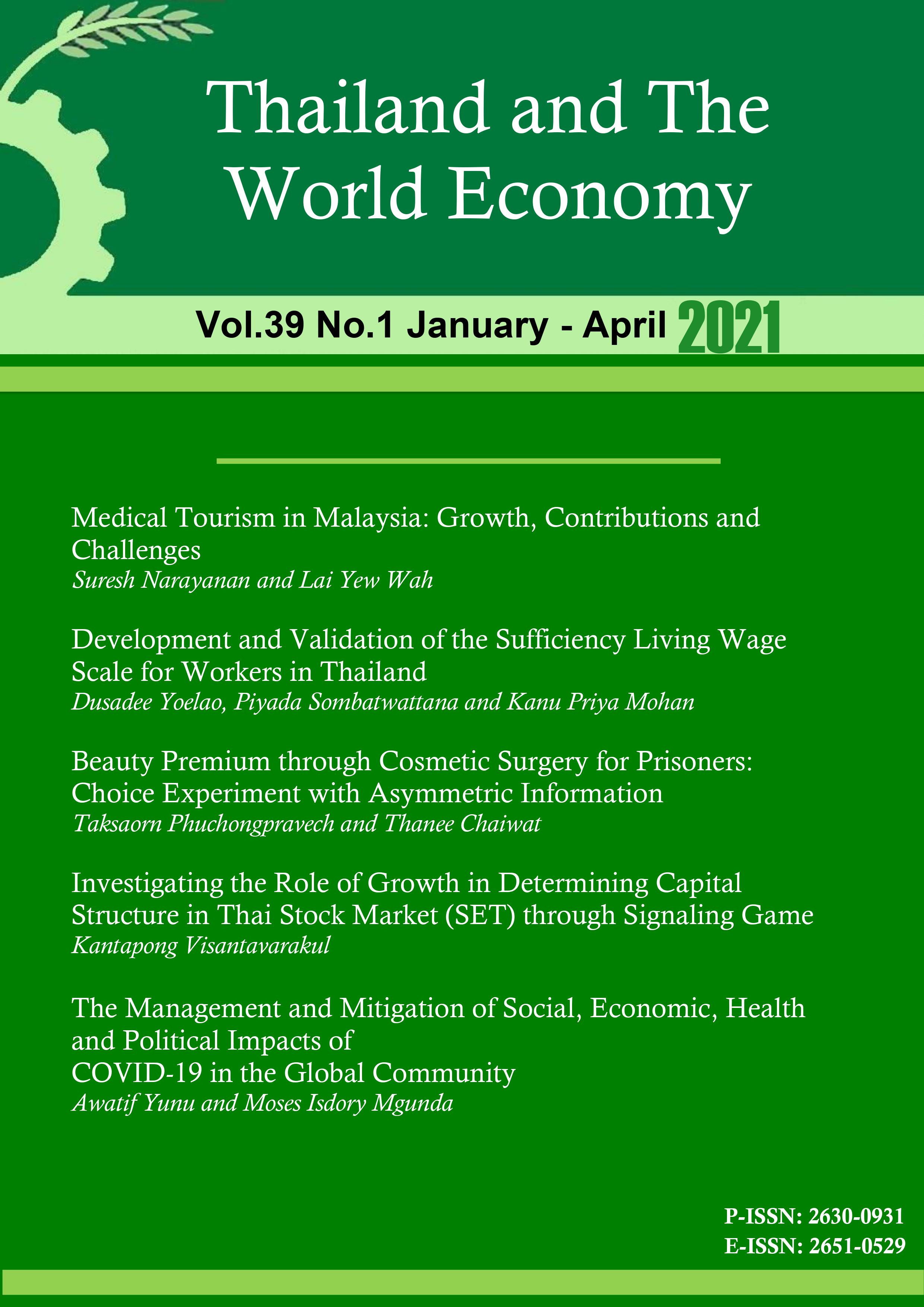Investigating the Role of Growth in Determining Capital Structure in Thai Stock Market (SET) through Signaling Game
Keywords:
Signaling Game, Pecking-Order Theory, Capital Structure, Growth ProspectAbstract
In this paper, we propose a static signaling game to explain how a firm’s growth prospect can determine its leverage ratio, through an assumption of asymmetric information between a firm’s manager and an investor. Applying the solution concept of perfect Bayesian equilibrium, there exists a separating equilibrium, where a firm with better growth prospects chooses the financing option that increases leverage ratio as a signaling device. Using fixed effects model on panel data collected from listed firms in SET (2004-2018), we found that market-to-book values of assets (proxy for growth) can explain debt-to-asset (proxy for leverage ratio) positively and significantly. The empirical result supports the game model result, and this is consistent with pecking-order theory (POT) prediction, rather than trade-off theory (TOT).
References
Gaud, P., Jani, E., Hoesli, M., & Bender, A. (2005). The capital structure of Swiss companies: an empirical analysis using dynamic panel data. European Financial Management, 11(1), 51-69.
González, V. M., & González, F. (2011). Firm size and capital structure: evidence using dynamic panel data. Applied Economics, 44(36), 4745-4754.
Maljuf, N.S., & Myers, S.C. (1984). Corporate financing and investment decisions when firms have information the investors do not have. Journal of Financial Economics, 13(2), 187-221.
Modigliani, F., & Miller, M. (1958). The cost of capital, corporation finance and the theory of finance. American Economic Review, 48(3), 291-297.
Morellec, E., & Schürhoff, N. (2011). Corporate investment and financing under asymmetric information. Journal of financial Economics, 99(2), 262-288.
Pongsupatt, A., & Pongsupatt, T. (2019). Determinants of capital structure: An empirical analysis of listed companies in Thailand Stock Exchange SET 100 Index. Retrieved from https://econpapers.repec.org/paper/sekiacpro/9811664.htm.
Serrasqueiro, Z., Matias, F., & Salsa, L. (2016). Determinants of capital structure: New evidence from Portuguese small firms. Dos Algarves: A multidisciplinary e-journal, 28(2016), 13-28.
Thippayana, P. (2014). Determinants of capital structure in Thailand. Procedia-Social and Behavioral Sciences, 143(2014), 1074-1077.










